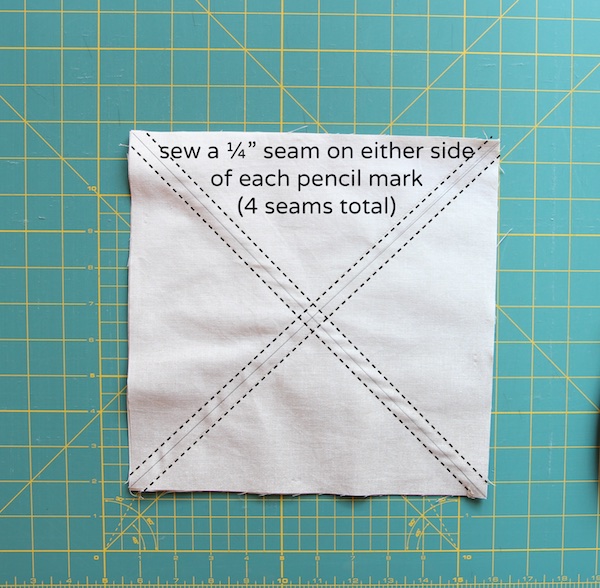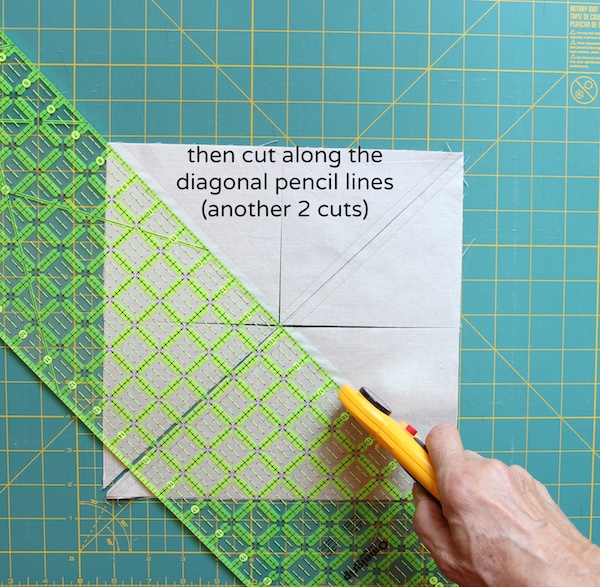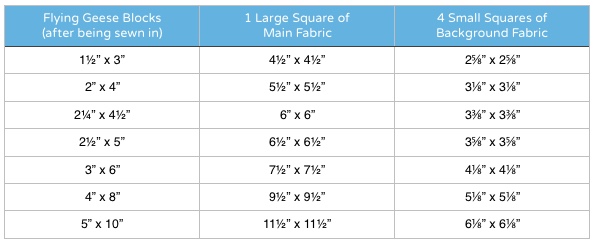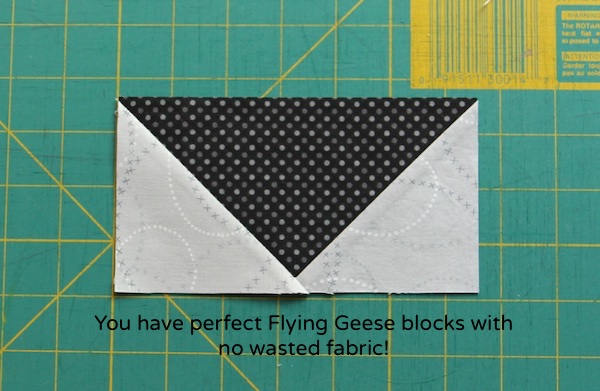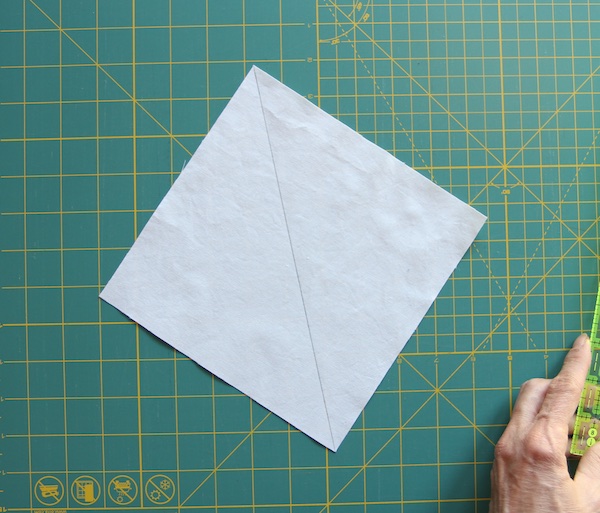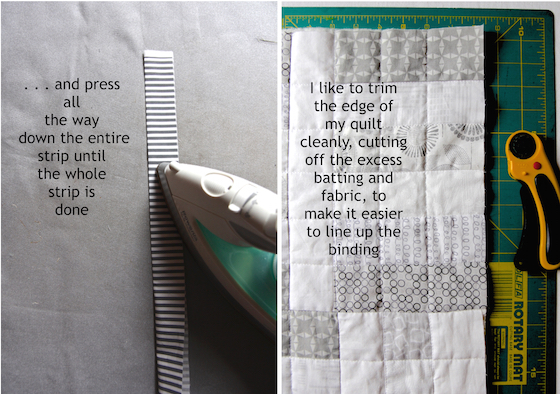
The only part of making a quilt that I do not enjoy is sewing the quilt back. I just hate calculating the dimensions, cutting the pieces and then sewing them together. There are many, many ways to make a quilt back. You can even use 108″ wideback fabric, and not have to cut anything – but the fabric choices for those are limited. So, unless it’s a baby quilt, you almost always have to piece a quilt back. I can give you a method to make it a little easier. Instead of cutting two separate pieces of fabric and sewing them together, you cut one long piece, fold it together and then sew right down one side. You then cut off the little fold line and open the fabric up and you’ve got a quilt back. It’s very easy.
I get a lot of quilting questions from beginner quilters, so I am going to diagram this method out in a really basic way (I hope). If you’re more of an advanced quilter, you won’t need such detailed instructions.
Keep in mind when you calculate dimensions for your quilt back, you have to take into account that although fabric width (WOF) is about 42 – 43″, you have to subtract the selvedges and you need to figure in ½” seams in your allowances. Also, if you want an overage on your quilt back, making it a bit larger than your quilt top, adjust accordingly – I always allow a couple inches all the way around the quilt for an overage. So remember to allow for those in your calculations. The example below doesn’t include overages – it’s just a example.
Also, I’ve recommended this phone app before and I use it all the time – it calculates how much yardage you will need for your backing. It’s QuiltingCalc by Robert Kaufman. Very handy.
This method actually works well for certain directional fabrics, because folding the fabric over on itself lines up the pattern in the same direction. Also, this method only works on quilt tops which are under 80″ in length.









Now just trim the length to the size you want.
Tips:
● Cut the selvedges off before you press the seam open – they are tighter and have less give than the fabric itself and can cause a pucker sometimes. Make a big enough seam so that you can do this. So make your sewing line ½” away from the selvedge. Press the seam open so it lays flat.
● Use a walking foot if you can to sew the seam – it will move the fabric along better, so that it is even.
I hope these instructions make sense and that they are helpful. Do you have a favorite method of piecing a quilt back?
Elaine
Save







